Automatic Underground Irrigation System
With an automatic underground sprinkler irrigation system, everything is an advantage. You save water and, with it, money since it waters in a more efficient and controlled way. You can choose the precise irrigation schedule and time. The intensity and frequency of watering depend on the type of grass, the climate, and the nature of the soil. Irrigation occurs evenly and gradually, similar to a gentle rain.
If you are going to install a buried automatic irrigation system, keep in mind that many of the parts that make up it go underground, so it is important that you decide before sowing the meadow.
Parts of The Underground Irrigation System
- They are responsible for throwing water on the grass. They can be of two types:
- Diffusers, which project a continuous curtain of water in the form of small droplets suitable for small lawn areas.
- Sprinklers or turbines are best suited for large surfaces and move while launching the jet of water.
Pipes of different sizes, connectors for solenoid valves, collars, elbows, T-pieces
They are made of polyethylene or PVC and serve to assemble the network that allows the circulation of water from the intake to the diffusers or sprinklers. They remain buried.
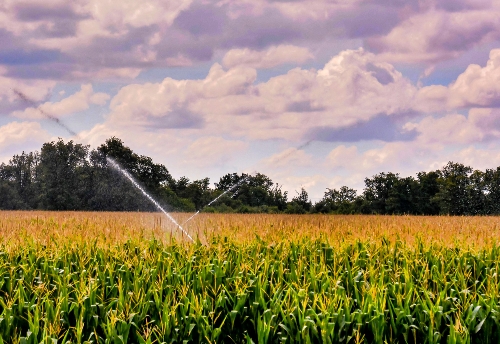
Solenoid Valves
They are the parts that open and close the water flow in response to the irrigation programmer's commands. They are necessary in gardens with several irrigation zones, each requiring a solenoid valve. Some include a programmer for small gardens.
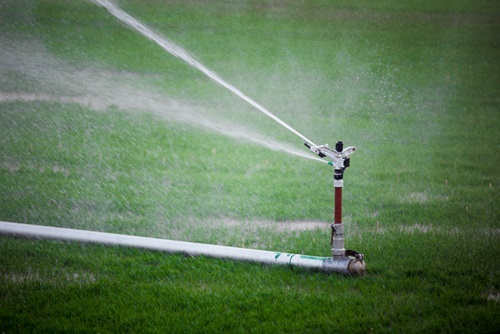
Filter
It is used to sift out particles carried by the water, which could clog the system's different parts.
Pressure Reducer
Ensures adequate pressure for the operation of the sprinkler irrigation system. Many pressure reducers include a filter.
Reflux Control Valves
They prevent the water from the automatic irrigation pipes from returning to the domestic network circuit.
Container Arch
Tank with a door at the top that houses several solenoid valves, and the multi-zone programmer is buried at ground level.
Rain Sensor
It is an external device provided with a small tray that, when filled with water, sends a signal to the programmer to suspend watering. It is a very useful instrument to save water. Some programmers include it.
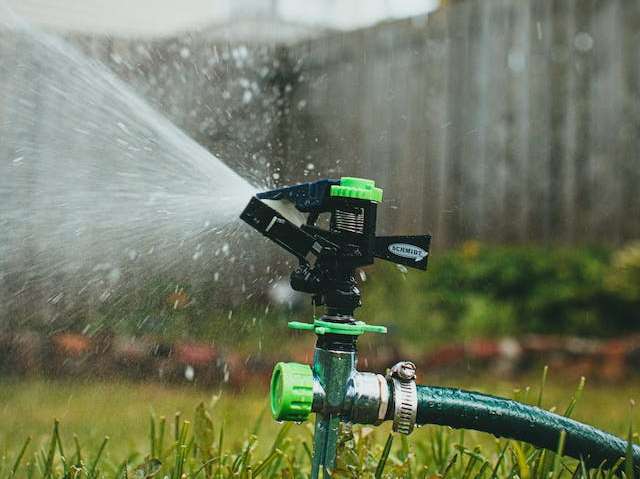
The watering frequency varies depending on the location’s climate and will be determined according to the appearance of the lawn. The need for water can be identified when the grass turns a bluish-green color and when footprints remain marked on it since the lack of water makes it difficult for the blade to recover its original position.
Irrigation Time and Frequency
The ideal would be to water the grass right at that moment since the deterioration is minimal, and as soon as the grass receives water, it recovers. Watering it before observing these signs provides no benefit.
As the drought of the grass increases, it wilts and turns grayish-green in color. When the grass is withered, it should be watered immediately, and it will recover quickly. If severe drought occurs, the plant stops growing, and the leaves turn brown and die. When watered at this point, the grass can survive. It would take three weeks to produce new leaves to recover fully.
Volume Applied For Irrigation
Sprinklers connected to 3/4-inch hoses apply a small volume of water; for this reason, they should be left running in the same area for 2 or 3 hours to moisten the root zone deeply.
Automatic irrigation systems with water outlets in all directions simultaneously can apply a large volume in 10 or 15 minutes, and rotating sprinkler systems can apply the necessary water in 30 or 40 minutes.
Time Of Day To Water
The ideal time to water is between 4:00 and 8:00 in the morning. At this time, the wind does not interfere with irrigation, and there is almost no water evaporation. Watering in the afternoon causes an increasing incidence of diseases. This inconvenience can be reduced by watering only when the grass needs it and sporadically but deeply. Watering during midday is ineffective since a large amount of water evaporates, making it very difficult to moisten the soil adequately and even burn the grass.

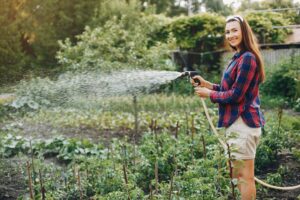 Another way to care for your garden more conscientiously is to install an automatic irrigation system. This is a method to water your outdoor plants smartly. This will allow you to program the amount of water you want to water your garden and the time and frequency.
Another way to care for your garden more conscientiously is to install an automatic irrigation system. This is a method to water your outdoor plants smartly. This will allow you to program the amount of water you want to water your garden and the time and frequency.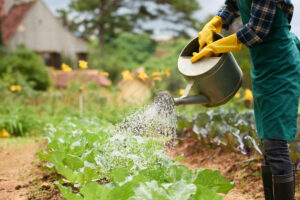 Add Native Plants To Garden Maintenance.
Add Native Plants To Garden Maintenance.